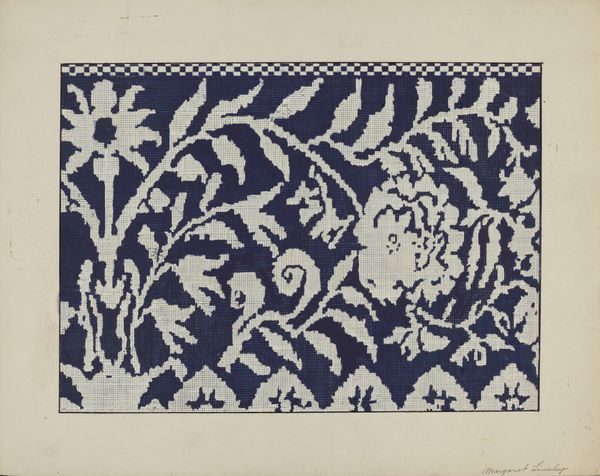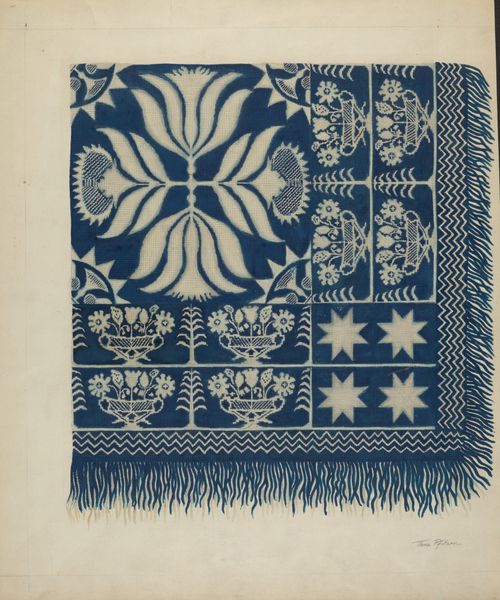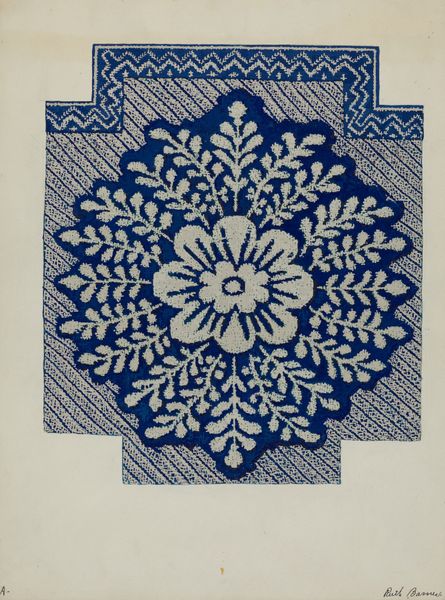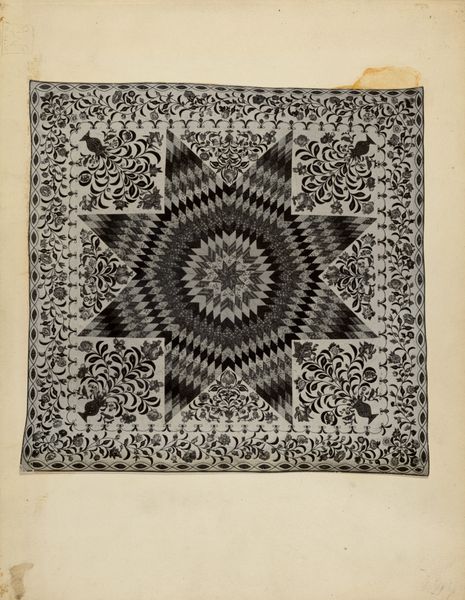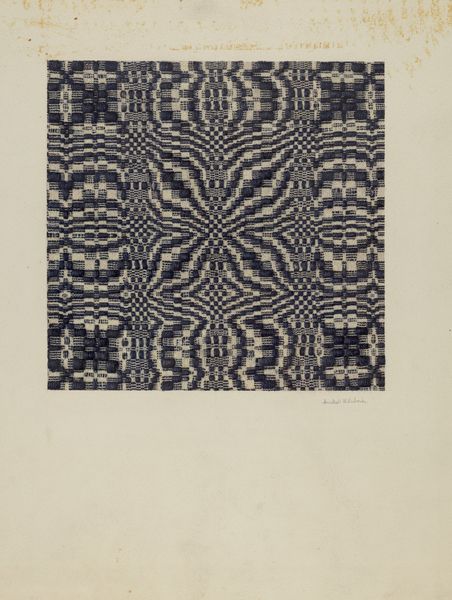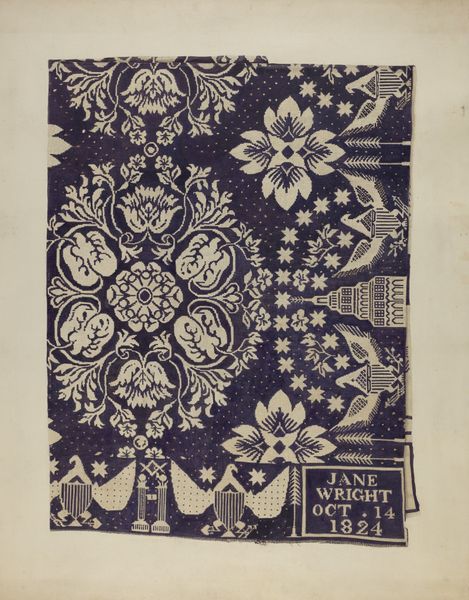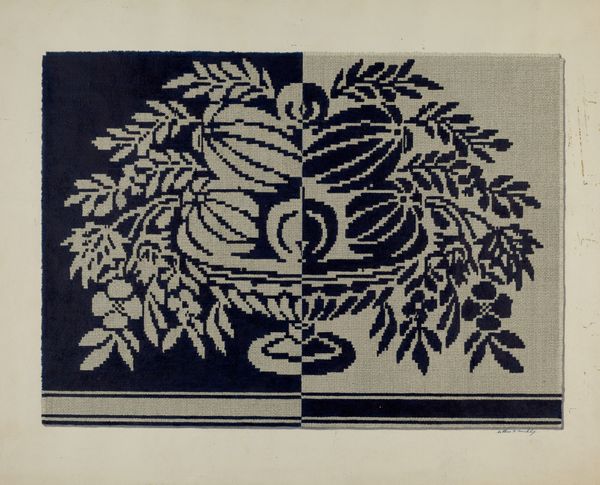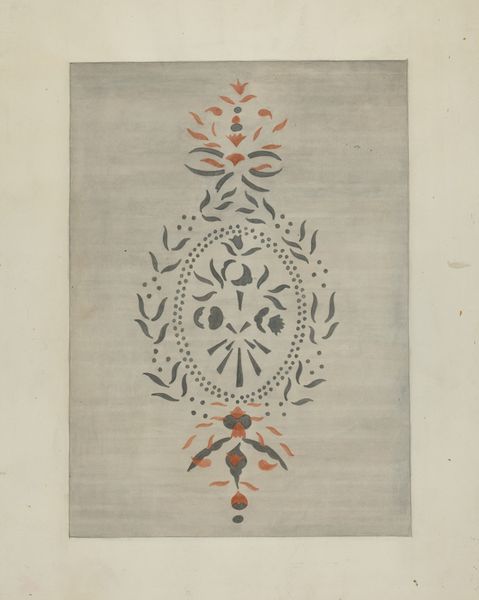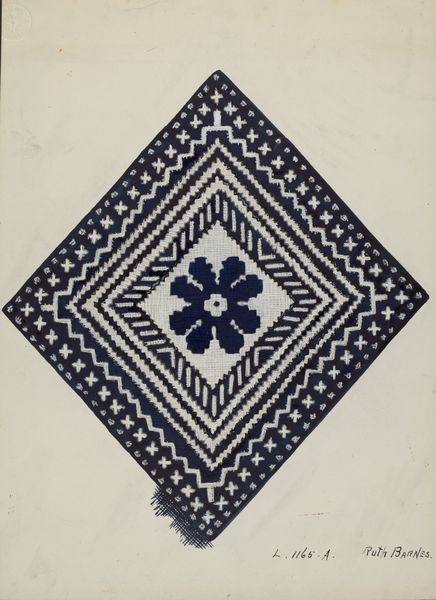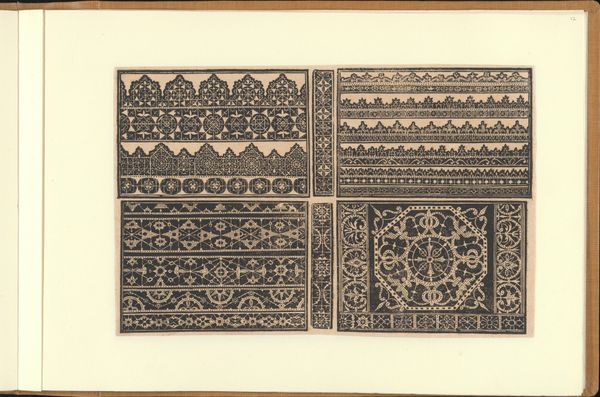
paper
#
folk-art
#
decorative
#
paper
#
folk-art
#
decorative-art
#
decorative art
Dimensions: overall: 60.2 x 50.3 cm (23 11/16 x 19 13/16 in.)
Copyright: National Gallery of Art: CC0 1.0
Curator: I find myself immediately drawn to the high contrast of this design. The navy background sets off the ivory patterns beautifully, doesn't it? Editor: Indeed. Today we're examining "Tyler Coverlet," created around 1940 by Arthur G. Merkley. Though described as a drawing, this artwork holds itself as something beyond ink on paper, something very practical. Curator: Let's focus on the visual structure. Notice the radial symmetry in the central floral medallion, contained in blocks with varied geometries; it echoes the tradition of quilt patterns but with a controlled austerity. Editor: Well, austerity belies the function. Woven textiles have histories linked to human needs, skill, labor—Arthur Merkley was born in a time when industrial looms redefined labor dynamics within the textile industry. We must appreciate how he engages this by using an outdated medium and applying the geometric repetition common with automated looms to something completely divorced. Curator: The artist definitely achieves an intricate, overall patterned effect, that then speaks to the broader pattern and decoration art movement that was very popular at this time, specifically for women artists reclaiming folk art styles. Editor: Let’s also think about its materials. Drawing implies a certain directness, an intimacy. Was it meant to be mass-produced or remain a personal project? That eagle motif in the corner is interesting to point out. It brings into the domestic sphere something very...institutional, which opens the door to many possibilities in the mind of the observer. Curator: I would offer that regardless of intended outcome, the power resides in how effectively the artist has synthesized these very divergent parts, which allows a cohesive and engaging pattern to come through, and which opens up pathways for our eye to travel, which invites and then rewards the viewer, inviting and rewarding...it is so very effective. Editor: Absolutely. "Tyler Coverlet" challenges the hierarchy between fine art and craft, reminding us of the ingenuity and the artistic potential embedded in our daily surroundings and the legacy of the tools and media used to generate new meaning and challenge our understanding of domestic design and decor. Curator: So, in viewing, what at first might seem simplistic through use of symmetry is rendered complex via content. And it then elevates it beyond mere decoration. Editor: A convergence of tradition and intent indeed, giving new texture to our understanding of this period.
Comments
No comments
Be the first to comment and join the conversation on the ultimate creative platform.

